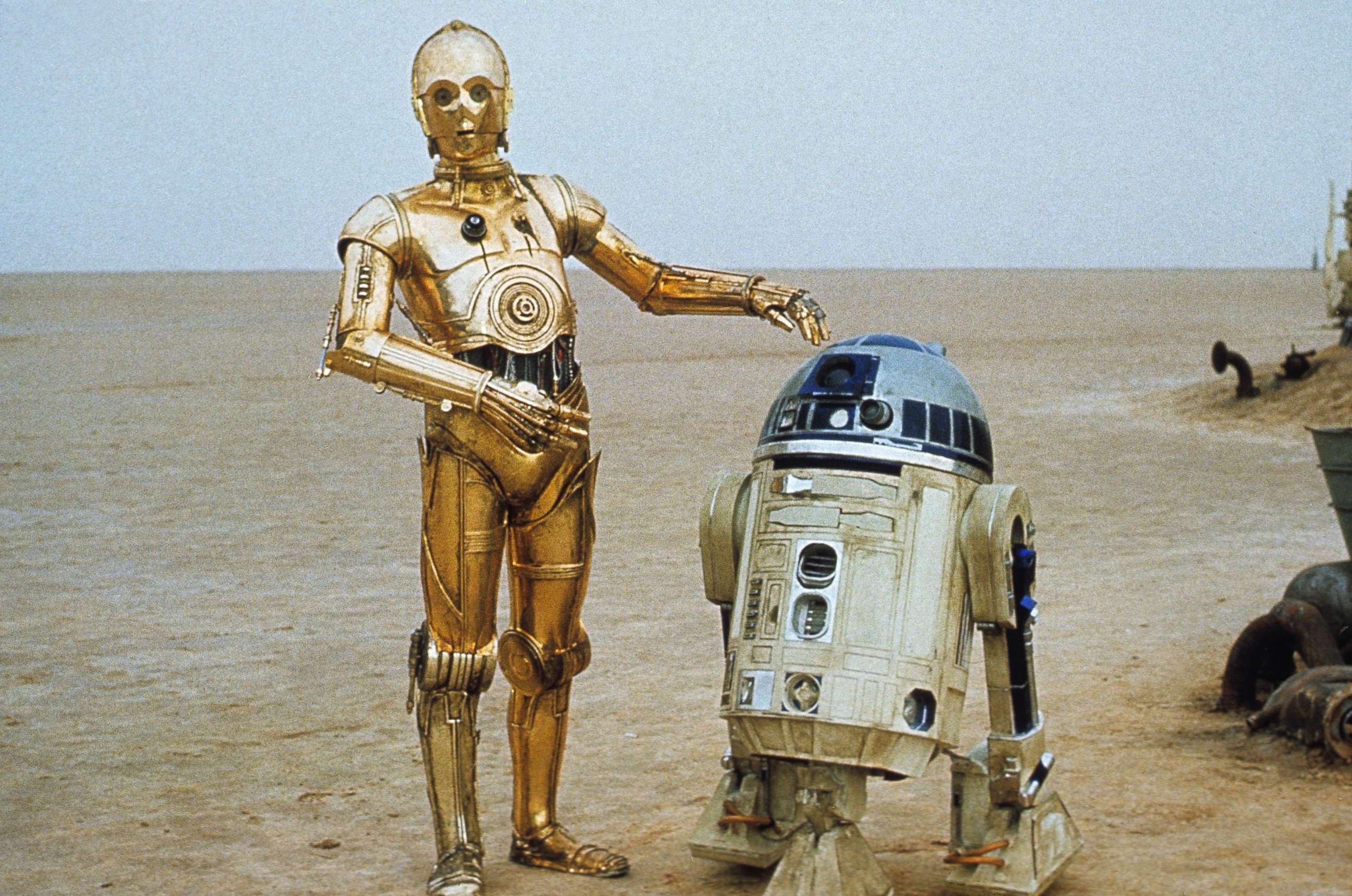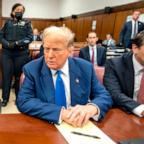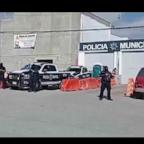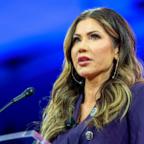42 years and 42 things we love about the making of the original 'Star Wars'
42 things you may not have known about the making of "Star Wars."
“Star Wars: The Rise of Skywalker” closes out a nine-film saga that began when George Lucas released the original installment of his space opera fantasy in 1977.
As the Skywalker story comes to an end 42 years after it began, here are 42 behind-the-scenes facts about "Star Wars" -- later re-titled "Episode IV, A New Hope" -- a movie that almost never got made.
Much of the credit here goes to the research and work found in the book "The Making of Star Wars" by J.W. Rinzler, essential reading for serious "Star Wars" fans. Here is a nerdy deep dive into some "Star Wars" trivia.
1. George Lucas auditioned a number of actors for the key roles of Luke Skywalker, Princess Leia and Han Solo. Cindy Williams, Amy Irving, Perry King, Kurt Russell and William Katt were among the many vying for a part. At one point, Christopher Walken and Jodie Foster were in serious consideration to play Solo and Leia.
2. After finally winning the roles that would make them famous, Mark Hamill’s weekly salary was $1,000, Carrie Fisher got $850 a week and Harrison Ford, $750.
3. Veteran English actors Alec Guinness (Obi-Wan Kenobi) and Peter Cushing (Grand Moff Tarkin) were paid substantially more. Guinness was paid 15,000 British pounds per week and 2% of the film’s net profits.
4. The role of Darth Vader was played by English bodybuilder David Prowse. But Vader’s iconic voice was provided by actor James Earl Jones, who was paid $7,500 dollars to perform his lines. The recording session took just 2 1/2 hours.
5. The character of Luke was at one point female. Lucas made the switch in a March 1975 draft script because the script had no women. "I was very disturbed by that," Lucas once said. "I didn't want to make a movie without any women in it."
6. The story for "Star Wars" went through many revisions, with Lucas formulating ideas for character names and places back in 1973. Eventually, he drafted a two-page "Journal of the Whills" featuring a hero named "Mace Windy." The character name was scrapped, but 1999's "Episode I: The Phantom Menace" featured a Jedi named Mace Windu, played by Samuel Jackson.
7. George Lucas wanted to conceptualize his story for skeptical studio executives. He hired concept artist Ralph McQuarrie, who once worked on Apollo mission coverage for CBS News. Working with Lucas, McQuarrie conceived an array of striking visual ideas that inspired and served as a road map for "Star Wars" designers even today.
8. Two other artists played key roles in "Star Wars" design. Model maker Colin Cantwell, a veteran of director Stanley Kubrick's "2001: A Space Odyssey," built the first "Star Wars" concept models including X-wings, Y-wings and speeders. As Lucas approved Cantwell's designs, McQuarrie would incorporate them into his paintings. Alex Tavoularis was hired in 1975 to draw storyboards that helped calculate the cost of the groundbreaking special effects.
9. The studio, 20th Century Fox, refused to pay McQuarrie, Cantwell and Tavoularis for their work. So George Lucas hired them using his profits from his previous hit film, "American Graffiti." "If not for his cash," J.W. Rinzler wrote, "it's very possible that 'Star Wars' might have irretrievably stalled."
10. A Ralph McQuarrie painting of two droids helped convince Anthony Daniels that he should change his mind about playing the role of a droid in a sci-fi flick. "I wasn’t a fan of the genre and probably thought it was beneath me. I was a serious actor," Daniels wrote in his autobiography "I Am C-3PO." But then he saw the painting. "I stared. My world stopped. My diffidence fell away. I was entranced. Captured. Bonded."
11. Lucas says the official birth of "Star Wars" came during a 1971 meeting with United Artists executive David Picker. After making a deal for "American Graffiti," Picker asked Lucas if he had anything else of interest. "I said, 'Well, I’ve been toying with this idea of a space opera fantasy film in the vein of Flash Gordon,'" Lucas said. "And he said, 'Great, we’ll make a deal for that, too.'"
12. In May 1973, United Artists passed on the idea of making "Star Wars." Universal also passed when an executive there reportedly declared, "We don’t make science fiction movies." Lucas then took the project to 20th Century Fox.
13. Following a rough draft, the official first draft of the script was finished in July 1974, and only four copies were made. Both versions contained an idea described as "the force of others." Lucas described it in "The Making of Star Wars." "The 'force of others' is what all basic religions are based on, especially the Eastern religions," he said. "Which is, essentially, that there is a force, God, whatever you want to call it."
14. As he revised the script, Lucas eventually combined the idea of a "Wookiee" creature with the image of his Alaskan malamute dog named Indiana, who would often ride shotgun with Lucas in his car. In the script, Chewbacca became the name of Han Solo's furry co-pilot.
15. The original design of Han Solo's ship had to be scrapped at the last moment because Lucas felt the design too closely matched a ship featured in a new television series called "Space: 1999." The new design we all know as the iconic Millennium Falcon was inspired by the shape of a hamburger. "I didn’t want it to be a flying saucer, but I wanted to have something with a radial shape that would be completely different from anything else," Lucas once said.
16. Despite a general lack of enthusiasm for the project, "Star Wars" officially got the green light from the Fox board of directors on Dec. 13, 1975.
17. Casting director Fred Roos, a fan of Harrison Ford, arranged to have the actor use his carpentry skills to hang a door at the casting office right when he knew George Lucas would be there. Lucas had been reluctant to cast Ford again after using him in "American Graffiti." But the ploy was successful, and Ford was hired. "It just kind of clicked for George at that point," Roos said.
18. Lucas had to create his own special effects company capable of producing the kinds of shots he wanted for "Star Wars." He called it "Industrial Light & Magic" or ILM. "We were sitting in an industrial park and using light to create magic. That’s what they were going to do," Lucas said.
19. Before creating new special effects, ILM had to invent special camera and optical technologies. They had an initial budget of $1.28 million but in the first three weeks had already spent more than $87,000.
20. In the spring of 1975, "Star Wars" producer Gary Kurtz scouted the Florida everglades for a jungle planet location. He traveled with director Francis Ford Coppola, who was simultaneously looking for a place that could double for Vietnam in his movie "Apocalypse Now."
21. John Williams was recommended to Lucas by Steven Spielberg, who had just worked with Williams on the score for "Jaws."
22. John Williams would go on to score nine "Star Wars" films as well as the score for "Star Wars: Galaxy’s Edge" at Disneyland and Walt Disney World. Williams’ themes are also incorporated into the "Star Wars" stand-alone films "Rogue One" and "Solo," as well as the franchise's television shows and video games.
23. Thanks to "American Graffiti," Lucas discovered that audiences were ready for something uplifting and he believed "Star Wars" could deliver. "When I started the film, 10- and 12-year-olds didn’t really have the fantasy life that we’d had," Lucas said. “They didn’t have any real vision of all the incredible and crazy and wonderful things that we had when we were young -- pirate movies and Westerns and all that."
24. Like Anthony Daniels, Alec Guinness wasn’t wild about acting in a science fiction movie, but admired Lucas for his work on "American Graffiti" and decided to read the script. "There was an excitement in the script. I wanted to turn each page to know what happened next. I wanted to know how each little incident was concluded. It had a touch of Tolkien’s 'Lord of the Rings.' It was a rather simple outline of a good man who had some magical powers. It was an adventure story about the passing of knowledge and the sword from one generation to the next," Guinness said.
25. In December 1975, Lucas told several people about a key element added to the fourth draft of the script: "I put this little thing on it: 'A long, long time ago in a galaxy far, far away, an incredible adventure took place.' Basically it’s a fairy tale now," Lucas said. "'Star Wars' is built on top of many things that came before. This film is a compilation of all those dreams, using them as history to create a new dream."
26. Lucas was already thinking about sequels in 1975. "I want to have Luke kiss the princess in the second book," Lucas said. "In the third book, I want the story to be just about the soap opera of the Skywalker family, which ends with the destruction of the Empire. Then someday I want to do the backstory of Kenobi as a young man -- a story of the Jedi and how the Emperor eventually takes over and turns the whole thing from a Republic into an Empire, and tricks all the Jedi and kills them."
27. In that same 1975 meeting, it was clear Obi-Wan Kenobi was an important character. “When this cranky old man pulls out his laser sword and cuts down three guys in a second -- that’s when you realize the old man is a master. This guy is a lot more than you think he is," Lucas said.
28. USC alum Ben Burtt was hired to record a wide range of animal sounds for the creatures of "Star Wars," including Chewbacca. At Marineland in Southern California, Burtt met Petunia the walrus. "A lot of her sounds became part of the Wookiee. Basically, the Wookiee ended up being a combination of Petunia and a young cinnamon bear by the name of Pooh," Burtt said.
29. The original Darth Vader costume was budgeted to cost $1,173 while the shiny golden costume for C-3PO -- which would get far more screen time than Vader -- was budgeted to cost $18,189.
30. The first day of filming for "Star Wars" was March 22, 1976 in Tunisia, doubling for the desert planet of Tatooine. The shoot was plagued by heavy rains, malfunctioning droids and storms that blew away pieces of the sets.
31. Stuntman Peter Diamond played a Tusken Raider who attacks Luke Skywalker. But during the scene, the mask he wore effectively rendered him blind. "As Hamill dodged the blind stuntman's violent blows, his look of fear was real," Rinzler wrote.
32. Filming had already begun when Lucas realized he had a script problem. After the heroes escape from the Death Star, Obi-Wan Kenobi really didn’t have much to do, and the story needed more drama. The solution, he decided, was to have Darth Vader kill the Jedi. Guinness was not happy and threatened to quit before Lucas convinced him to stay.
33. The boom microphone operator on location in Tunisia was a man named Ken Nightingall, who was famously photographed wearing only a pair of pink booty shorts. Decades later, cosplayers would rediscover the photo and begin dressing up as "Pink Shorts Boom Guy" at "Star Wars" conventions.
34. Lucas was unhappy with the scenes filmed during the trouble-prone Tunisia shoot. "By the end of the location shoot, I’d only got about two-thirds of what I’d set out to get," Lucas said. "It kept getting cut down because of all the drama and I didn’t think it’d turned out very well; I wasn’t happy with what I had managed to get. I was very depressed about the whole thing. I was so depressed I couldn’t even go to the wrap party."
35. After Tunisia, the crew went to London to film scenes on sound stages. But Lucas, who was used to the freedom of documentary filmmaking, was frustrated by the rules that said filming had to stop at 5:30 p.m. sharp, even if filming on a particular scene was almost finished. Lucas was forced to pick up the scene the next morning, which created huge delays.
36. April 9, 1976 was the first day on the London set for Peter Mayhew, who played Chewbacca. Mayhew, who had worked as a hospital orderly and had a bit part in the move "Eye of the Tiger," stood 7 feet, 2 inches tall.
37. Makeup artist Stuart Freeborn (who would later design Yoda) worked with his wife, son and six assistants to create the various creature costumes for the 42 extras that would be seen in the Mos Eisley cantina sequence.
38. Carrie Fisher arrived in London in April 1976 for costume fittings. She was worried about what she was going to wear, and especially her hair style. "One of the costume sketches had me wearing a little Peter Pan leotard," Fisher said. "But it was rejected. I was also scared about what they were going to do to my hair, because I had so much hair put on me, two different sessions of that -- I had at least 30 hairdos tried on me."

39. In Leia’s scenes with the evil Grand Moff Tarkin (Peter Cushing), Fisher says she had trouble with the line "I recognized your foul stench" because Cushing smelled like lavender. Cushing said: "You see, I always lavishly slosh lavender water all over myself whenever I’m filming. I also use a tube of Colgate Dental Cream, because I’m very conscious of bad breath. In fact, if I’m watching a boring love scene in a movie, I can’t help thinking: I do hope they’ve both brushed their teeth."
40. "Star Wars" was shot in 84 days, exposing 322,704 feet of film. Hamill worked 70 days, Ford for 42 and Fisher, 37. The last day of shooting was July 23, 1976. But the team at ILM still had a lot of work to do. At that point in the production, ILM had already spent half its budget but had only completed one of the 360 special effects shots the film needed.
41. In the meantime, Ben Burtt was adding sound effects to completed shots. The sound of an elephant howling was slowed down to become the iconic roar of a TIE fighter. For the shot of a Stormtrooper falling into a Death Star chasm, Burtt added a scream sound that originally appeared in a 1951 Warner Bros. movie called "Distant Drums." It became known as the "Wilhelm scream," and Burtt would add the audio Easter egg to nearly every movie he would later work on, before it was finally retired.
42. “Star Wars” opened on May 25, 1977 in just 32 theaters nationwide. George Lucas had been busy working overnights to finish a new version of the film’s soundtrack, so he didn’t even realize the movie had opened until he saw crowds in line at Grauman’s Chinese Theatre. "I looked up at the marquee and said, 'Oh my God, it’s 'Star Wars!' I forgot the film was going to be released today! Holy moly!' But it was like six o’clock, so I had to go back to the studio to finish the mix." Lucas saw limos parked out front of the Chinese theater, which he later learned belonged to Playboy founder Hugh Hefner. Hef and his entourage stayed to watch the movie twice in a row.
Lucasfilm is a part of ABC’s parent company, Disney.




